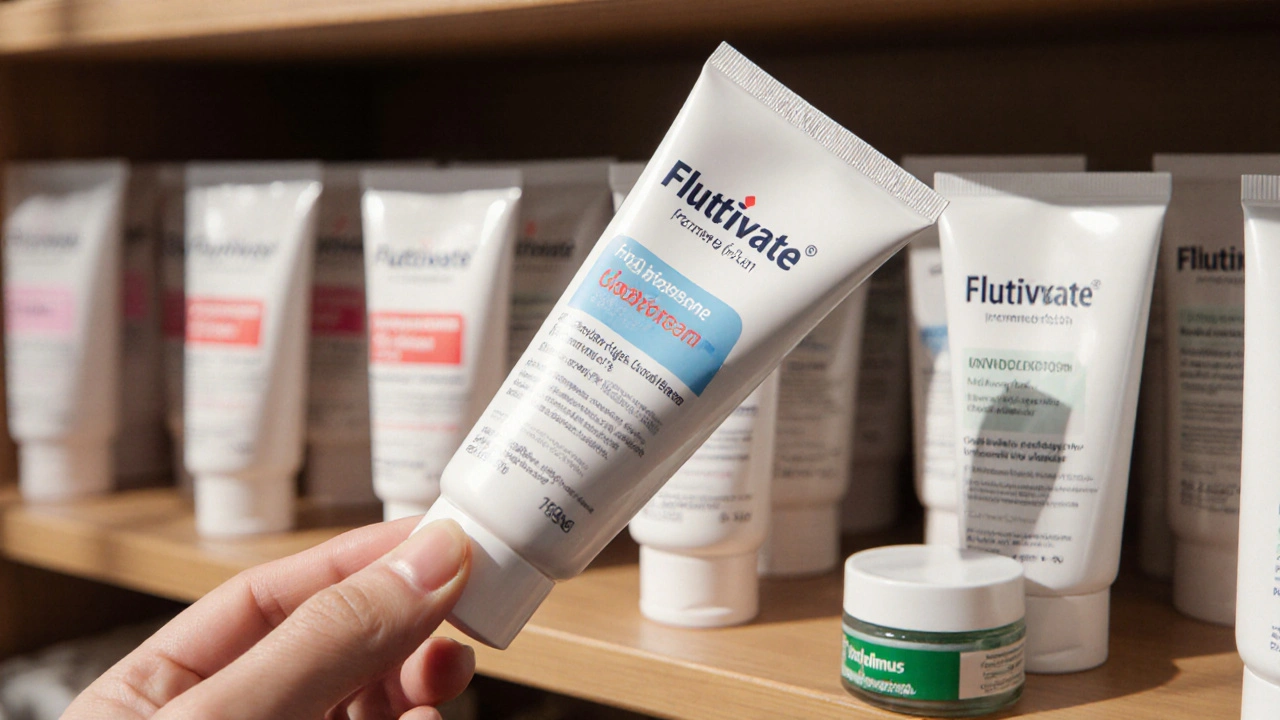Fluticasone Cream: Uses, Application, and Safety
When working with Fluticasone cream, a prescription‑strength topical corticosteroid designed to calm skin inflammation. Also known as Fluticasone propionate, it acts by narrowing blood vessels and dampening the immune response that fuels redness and itching. In plain terms, you slap a thin layer on the irritated spot, and the drug steps in to quiet the overactive cells that cause flare‑ups. This quick‑acting formula is especially handy for adults and kids who need fast relief without a bulky ointment. Because it’s potent, doctors usually reserve it for persistent cases rather than occasional rashes. Below we’ll break down who benefits most, how to use it safely, and what to watch out for.
How Fluticasone Fits Into the World of Topical Corticosteroids
The first related entity you’ll encounter is corticosteroid, a class of steroid hormones that reduce inflammation and immune activity. Topical corticosteroids range from mild over‑the‑counter creams to strong prescription options like Fluticasone. Their potency is measured in classes, with Fluticasone landing in the mid‑to‑high range—strong enough for stubborn conditions but still manageable for most skin types. Another key player is eczema, a chronic skin disorder marked by dry, itchy patches. For eczema sufferers, Fluticasone offers a targeted approach: apply a thin film twice daily during a flare, and you’ll often see redness fade within days. The drug works by suppressing the cytokines that trigger the itch‑scratch cycle, giving the skin a chance to heal without constant irritation. Patients who combine the cream with gentle moisturizers report even quicker results, as the barrier repair helps lock in moisture while the steroid does the heavy lifting.
Beyond eczema, psoriasis, an autoimmune condition that causes thick, scaly plaques on the skin is another common reason doctors prescribe Fluticasone. While systemic treatments exist, many users prefer a localized cream to tackle isolated plaques without exposing their whole body to powerful meds. When you spread the cream on a plaque, it softens the buildup and reduces the overactive skin cell turnover that characterizes psoriasis. A typical regimen involves a thin layer once or twice a day for two to four weeks, then tapering as the skin improves. Another related condition is dermatitis, inflammation of the skin that can arise from allergies, irritants, or genetic factors. Whether it’s contact dermatitis from a new detergent or atopic dermatitis tied to genetics, Fluticasone’s anti‑inflammatory power can calm the outbreak quickly. The key is to start with the lowest effective dose, monitor for side effects, and stop once the rash clears to avoid thinning of the skin.
Safety is the final piece of the puzzle. Because Fluticasone is a potent steroid, long‑term overuse can lead to skin thinning, stretch marks, or even systemic absorption that might affect hormone levels. Always follow your doctor’s instructions: use the smallest amount needed, limit application to the affected area, and avoid covering the treated skin with tight bandages unless directed. If you notice unusual bruising, severe burning, or signs of infection, pause the treatment and contact your healthcare provider. Store the cream at room temperature, away from moisture and heat, and keep the cap tightly closed to maintain potency. With these guidelines, you can harness Fluticasone’s benefits while keeping risks low. Below, you’ll find a curated selection of articles that dive deeper into dosing tips, alternative therapies, and real‑world experiences, helping you make the most of this powerful skin solution.

